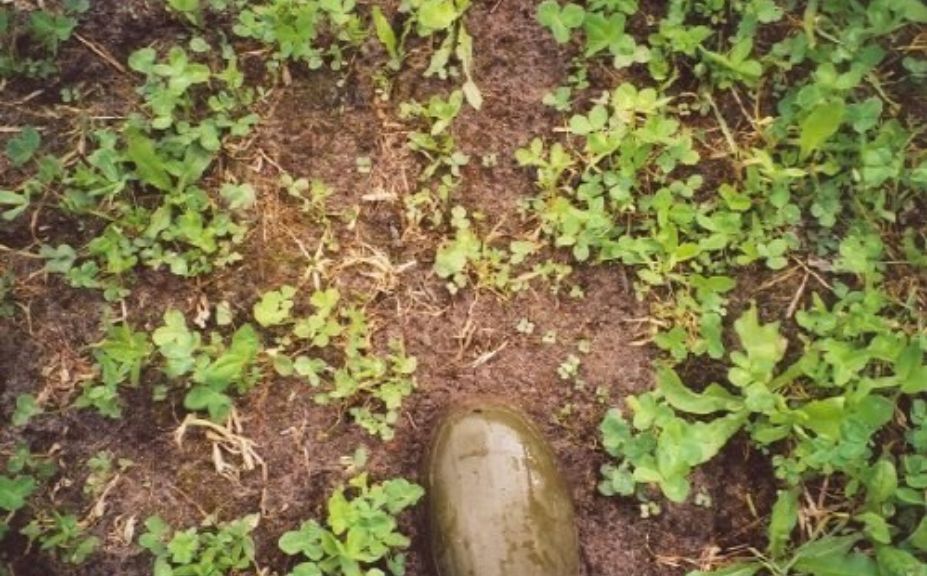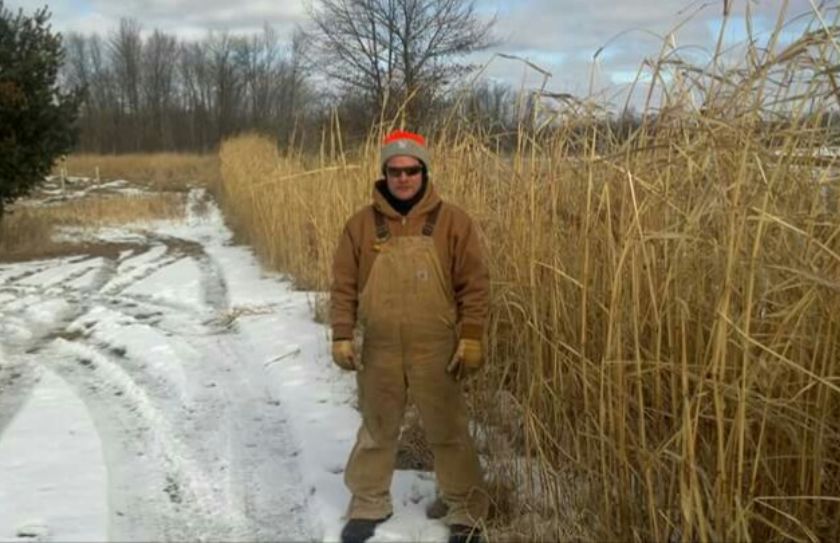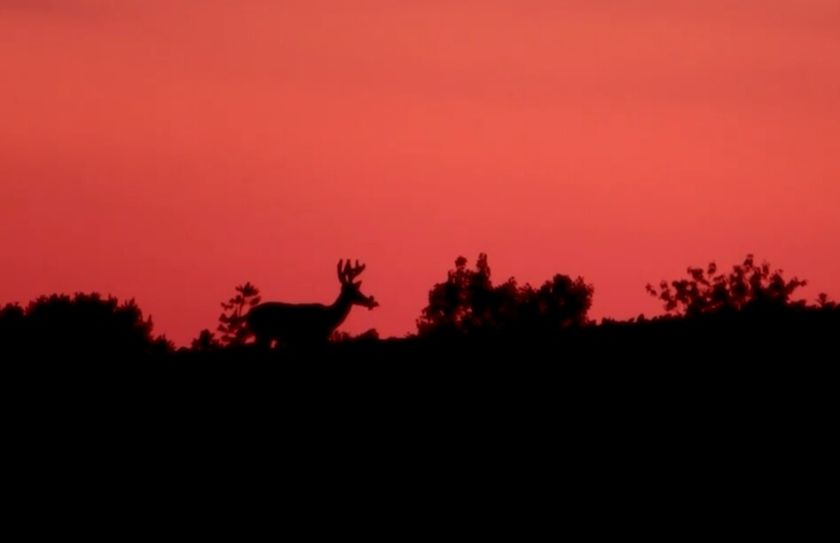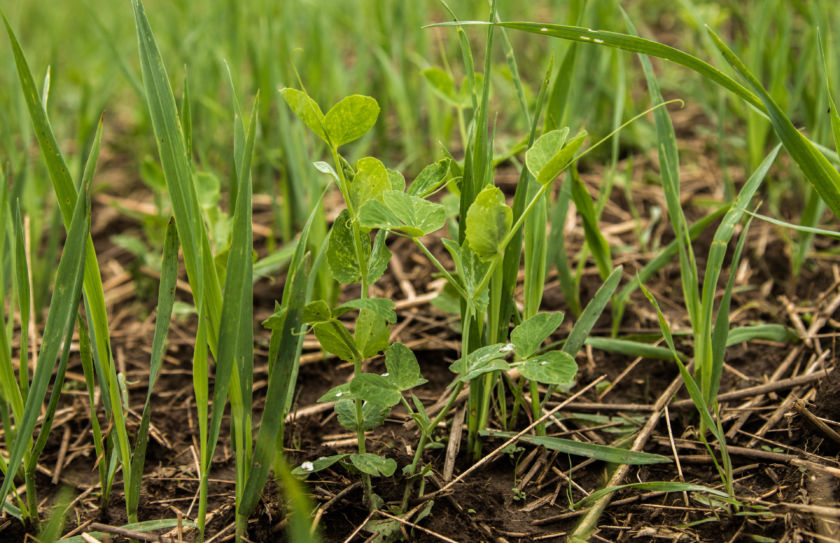
10-12 years ago I was food plotting my remote wilderness property in the UP of MI quite heavily. The primary focus on the property was to offer the most food to the local deer population, for the longest amount of time, while at the same time completing the activities in an orderly rotational basis. The following is a description of a four season food plot planting design that you may find appropriate to incorporate into your property management activities. This design was fine-tuned over a period of several years and became a vital component in the continuing management of the food plot program. The purpose of this design was simple: To establish a perennial base within a cool season annual, with a planting date aimed at offering the most food for each month of the year with an emphasis on the most critical months, with soil or plot disturbance taking place during the least critical months of the year. With a one year food plot planting, you should expect to experience the effective use of annual seed blends throughout the hunting season and winter months, followed by the remaining benefits of the established perennial base for the months of spring through early fall.
The Establishment of a Food Plot:
Of course, to experience the benefits of this food plot strategy or any other planting strategy your plot must first be ready to plant. Your food plot is ready to plant when potential weed problems and ph levels have been corrected, and you have used the results from a soil test to make a proper determination of what type and what amounts of fertilizer need to be applied to your plot.
Late summer is the perfect time to establish a four season plot. The plot area can be designed in the spring, limed, and sprayed multiple times to effectively control any potential weed problems by the necessary planting date. In my area, late summer is one of the most abundant times in the woods for total food and forage for the local deer herd, and it is at this time you are ready to start a four season plot strategy.
The four-season planting begins with one of the systems most important ingredients, the seed. A combination of annual rye, oats, brassica and clover has been my most successful combination and each seed provides a specifically targeted goal. The time to plant is determined by the appropriate time to plant brassica, rye and oats in your area, for example, from mid to late August in northern MI where I live, to early September from PA to WI.
A four season seed variety of annual rye, oats, brassica and clover is easy to establish and success is high when broadcasted into a well prepared seed bed. The use of a cultipaker or drag of some kind, including a spring-toothed harrow, chain-link fencing, pallet, or even the sideways use of an ATV ramp can be more than adequate. Broadcasting just before an approaching rainstorm or damp period will virtually gaurentee success.

One year Food Plot Strategy:
After experimenting with various grain ratios and seed amounts, a mix containing 50#s of rye, 50#s of oats, and 6-8#s of clover works very well. A mix of 7#s of brassica and clover works just as well! The rye is the workhorse choice of the combination. Annual rye is one of the most tolerant seed types relative to soil quality, soil ph, and seed life. Annual rye will remain green the entire winter, and will be used by deer until the clover comes to life in the springtime. Too little rye can result in diminished attraction throughout the late fall and winter, but too much rye can out-compete the clover in the spring. Balance is needed with this planting strategy and that balance is provided by the use of the oats. Some may say that this is the wrong time to plant oats because they will die in the winter, but this is exactly the intended result! The brassica and oats are a great food source for most or all of the entire hunting season, but after freezing and dying during the winter, they both offer no competition to the establishment of the clover the following spring.
The clover is the base of the planting and with only a 50% competition from the rye in the spring, the clover shines. Using a grass specific-herbicide in the spring to kill the rye is a great choice, and the rye can also be controlled and eliminated through frequent mowings. The clover becomes established very well throughout the damp fall, followed by winter dormancy, and then receives another shot of growth during the spring time. If light areas of clover growth appear in the spring, a frost seeding can be used to thicken the stand. By mid-July it is common for the clover to be knee-high and extremely thick. The clover will be available for new born fawns, nursing mothers, antler-growing bucks, and offers a great food source for many months. Adding chicory to the clover mix at planting time further enhances the attractiveness and usefulness of the plot throughout summer drought.
Food Plot Results:
Simply, the four season planting strategy will give you the most bang for your buck, with the life of each seed variety designed to be at its peak for a particular season, or seasons. You and your deer will enjoy the attractiveness and hardiness of the cool season annuals throughout the entire fall, winter, and early spring, all while, the clover is strengthening its roots and preparing for immediate growth and usefulness soon after the beginning of spring green-up. You can then count on several months of growth, nutrition, and attractiveness from the clover, and you can maintain the plot for several years if desired.
A Twist:
For an added twist, consider working a brassica blend into the field in mid-spring, at a time when soil exposure is still adequate, moisture is in the air, and freezing night time temperatures have diminished significantly. Frost seeding brassicas into the plot can be an option, but success may be limited due to excessive frost and low temperatures that have the potential to kill young brassica plants. Waiting an extra few weeks after and working-in the brassica mix may greatly improve the success of your planting. By reducing the seeding rate of the clover from 6-8#s to 3-4#s, you can leave enough room within the young plants to broadcast 4#s of brassica and then cultipack.

*This 2004 fall blend was carried through the winter in great shape to offer an opportunity to broadcast brassica into for an early spring jumpstart!
Conclusion:
If your goal is to provide the most food, for the most seasons, this may be a great plan of attack for you! Also, this practice can be a part of a 1-time planting each late summer to offer food for an entire year. Now, many years later I highly recommend tailoring each blend to your specific need, on your parcel. For example you may need to add soybeans and peas to your late summer brassica blend to help "sweeten the plot" for picky deer located in bountiful ag regions and oats may be a better choice than rye if you lack the resources to control the rye in the spring. As with any food plot program, I encourage you to constantly expirement like I have to make sure that you are maximizing your efforts for the both the benefit or yourself and the local deer herd.


